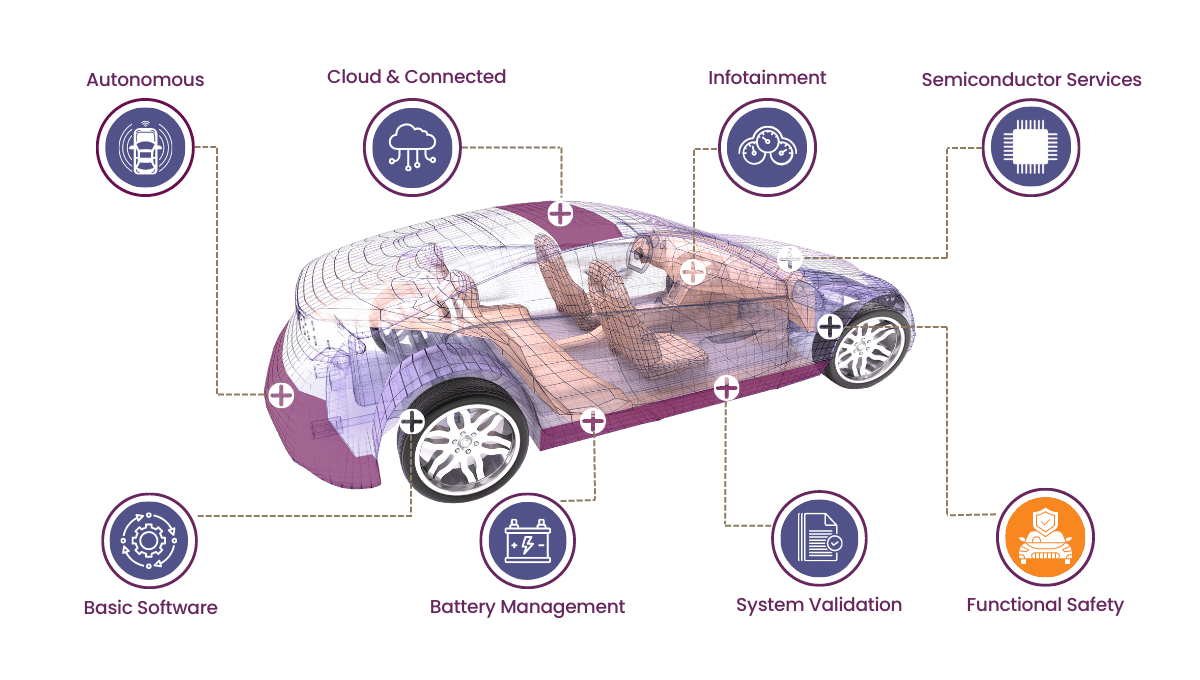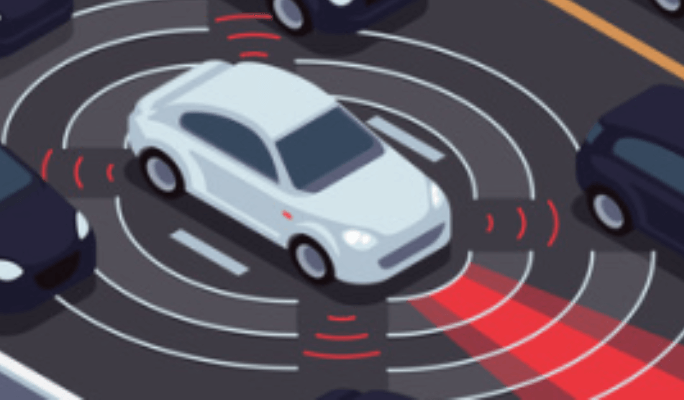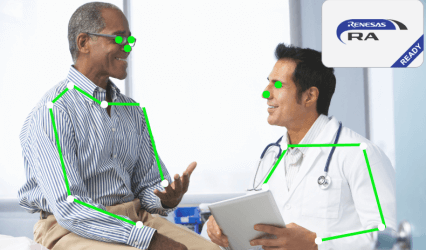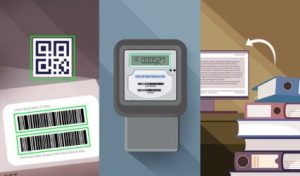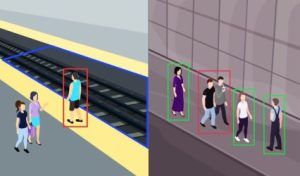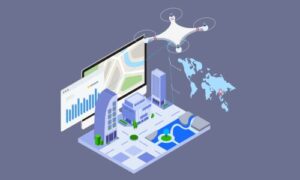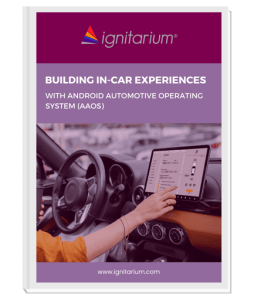AUTOMOTIVE DIGITAL SERVICES (ADAS)
Leveraging our expertise in semiconductor design, embedded systems, and digital software, we specialize in building next-gen, AI-enabled, high-compute SoCs, and complex software stacks for Software-Defined Mobility systems. Our solutions prioritize safety and security, integrating advanced ADAS services for enhanced automotive functionality.
Analytics & Digital (ADAS Services)

Ignitarium offers development and optimization of Deep Learning AI models operating on data feeds from Camera, LiDAR and RADAR sensors. Our multi-modality data fusion expertise combined with live & synthetic data management knowhow allows us to create perception software that meet the needs of future mobility systems.
Add to this microservices frameworks that can seamlessly and securely connect containerized in-vehicle applications to their digital twins on cloud, and you have all the ingredients required for building the next generation Cloud-connected Software Defined Vehicle.

AD / ADAS services
- Model Development for various sensor feeds [2D/3D Camera, LiDAR, RADAR]
- Multi-modal Sensor Fusion
- DL model porting and optimization on heterogeneous compute
- Benchmarking and Validation of Models
Digital Services
- Full stack App development
- Vehicle to Cloud (Service Oriented Architecture)
- DevOps & MLOps pipeline creation and optimization
Data Preparation for Deep Learning
- Data Annotation
- Synthetic Data Generation
- Simulation (Gazebo, Unity)
Battery Management System (BMS) Analytics
- Prediction of State-Of-Charge (SOC), State-Of-Health (SOH), Remaining-Useful-Life (RUL)
- Real-time prediction of BMS parameters via applications running on in-vehicle MCUs
- Cloud-based Digital Twins of in-vehicle BMS applications
- Off-line Cloud-based analytics of long term BMS parameters from multiple EVs
Introduction to Advanced Driver Assistance Systems (ADAS):
Advanced Driver Assistance Systems (ADAS) are at the forefront of automotive innovation, enabling safer and smarter vehicles through intelligent perception and decision-making.
Ignitarium’s specialized ADAS services focus on developing robust AI-based solutions using data from diverse automotive sensors. Key offerings include:
- Model development for 2D/3D camera, LiDAR, and RADAR feeds to detect and track objects in dynamic driving environments
- Multi-modal sensor fusion to combine inputs from multiple sensors for enhanced accuracy and reliability
- Deep learning model porting and optimization across heterogeneous computing platforms for efficient real-time processing
- Benchmarking and validation of models to ensure consistent performance across edge and cloud-based automotive systems
By leveraging these core capabilities, Ignitarium empowers OEMs and Tier-1s to build high-performance ADAS systems that accelerate the journey toward autonomous and software-defined vehicles.













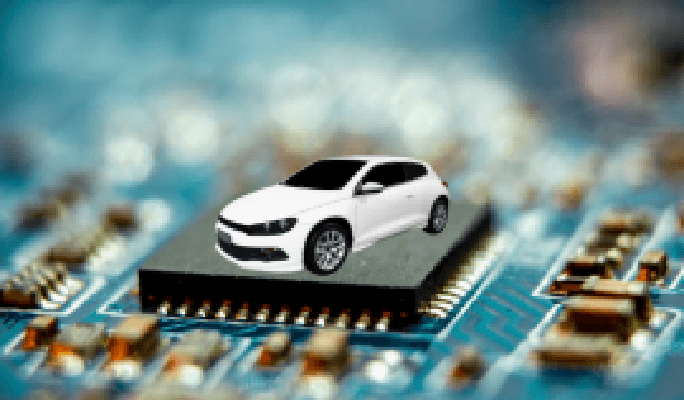
AUTOMOTIVE
FuSa Qualification of an Automotive SoC
Learn More

AUTOMOTIVE
Development of an Automotive SoC
Learn More
Hardware Platforms





Autosar


Model based design


Testing



Compliance


OS



We're here to help! Reach out to us with any questions or inquiries.


ADAS is a collection of electronic technologies integrated into vehicles to assist drivers in making safer driving decisions. These systems use sensors, cameras, and software algorithms to monitor surroundings and help prevent accidents through alerts or automated actions.
ADAS capabilities are defined across five levels (0 to 5) based on the degree of automation:
Level 0: No automation; driver is fully in control.
Level 1: Driver assistance (e.g., adaptive cruise control or lane keeping).
Level 2: Partial automation; vehicle can manage steering and speed but driver must stay engaged.
Level 3: Conditional automation; car can drive itself in certain scenarios, but driver must be ready to take over.
Level 4: High automation; vehicle can drive itself without human input in specific conditions.
Level 5: Full automation; vehicle is fully autonomous in all conditions.
Forward Collision Warning (FCW) is an ADAS feature that monitors the distance between your vehicle and the vehicle ahead. If it detects a potential collision, it alerts the driver through visual or audible warnings, giving them time to brake or steer. In many vehicles, FCW is paired with Automatic Emergency Braking (AEB) for added safety.
Popular ADAS features include:
- Adaptive Cruise Control
- Lane Keep Assist
- Blind Spot Monitoring
- Forward Collision Warning
- Automatic Emergency Braking
- Rear Cross Traffic Alert
- Traffic Sign Recognition
- These technologies enhance safety and reduce driver fatigue.
No. While ADAS significantly improves vehicle safety, it is meant to assist, not replace, the driver. Even with advanced automation, driver supervision is usually required. Fully autonomous vehicles (Level 5) are still under development and not widely available.

